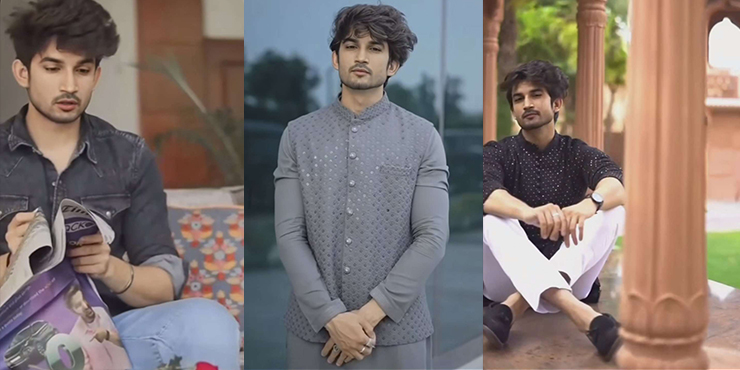An AI-generated deepfake video showcasing an influencer digitally moulded into the likeness of the late actor Sushant Singh Rajput has surfaced, shocking and unpleasant. The increasing sensationalization of mortality and the use of technology for dubious ends are illuminated by this disturbing trend, which begs fundamental concerns about the line between entertainment and ethics.
Shocked fans with deepfake videos of SSR

Despite the impressive possibilities, deepfake technology has often been exploited for malicious ends. As well as highlighting the extent to which people are ready to blur the lines between fact and fiction, the fabrication of a deep fake video in which a living influencer’s face was replaced with that of a deceased celebrity crosses the line between right and wrong.
The sudden passing of Sushant Singh Rajput was a tragedy that shocked and saddened his many admirers, friends, and colleagues in the film business. The actor’s suicide opened up much-needed dialogue on mental health and the perils of stardom, drawing attention to the importance of empathy and compassion. The appearance of this AI-generated deepfake, however, seems to devalue such talks by commercializing and trivializing death.
Deepfake: Fact or fiction?

This deepfake has far-reaching ramifications, far beyond the realm of pure entertainment. It challenges the value we place on human life and the legacies of the departed. As a result of incidents like this, society is becoming less sensitive to death, and the feelings of the bereaved and the borders of what is considered acceptable are being pushed further.
● When analyzing the production and dissemination of deepfake content, it is equally important to consider the implications for ethics. The use of advanced technology to produce wholly fictitious yet disturbingly lifelike films has potentially devastating repercussions.
● The potential danger of deepfakes cannot be overstated; it ranges from distributing misinformation and fake news to damaging reputations and even igniting conflicts. This instance highlights the significance of avoiding unethical behaviour when using technology to preserve confidence and prevent abuse.
● In addition, this AI-created deep fake highlights a broader systemic problem associated with influencer culture and the compulsion to garner attention at any cost. Concerns about the priorities and ideals being maintained can be seen in the extremes to which some people would pursue social media popularity or viral moments. Death, mental health, and human emotions should not be used in the goal of likes, shares, and views.
● With the rapid development of new technologies, people must unite to protest the diminishment of serious issues. The values of respect for life, compassion for the bereaved, and ethical technology use must be promoted. When platforms and users alike help normalize insensitive treatment of sensitive topics for clickbait, they should both be held accountable.
Wrapping up
In conclusion, the recent discovery of an AI-generated deepfake starring an influencer posing as Sushant Singh Rajput is a depressing example of the irresponsible use of death and sensitive themes for amusement. It serves as a sobering reminder that we, content consumers, must demand sensitivity and respect from content creators. It is time for society to take stock of our priorities and make necessary changes to ensure that morality and compassion inform our online and offline behaviours and products.


































































